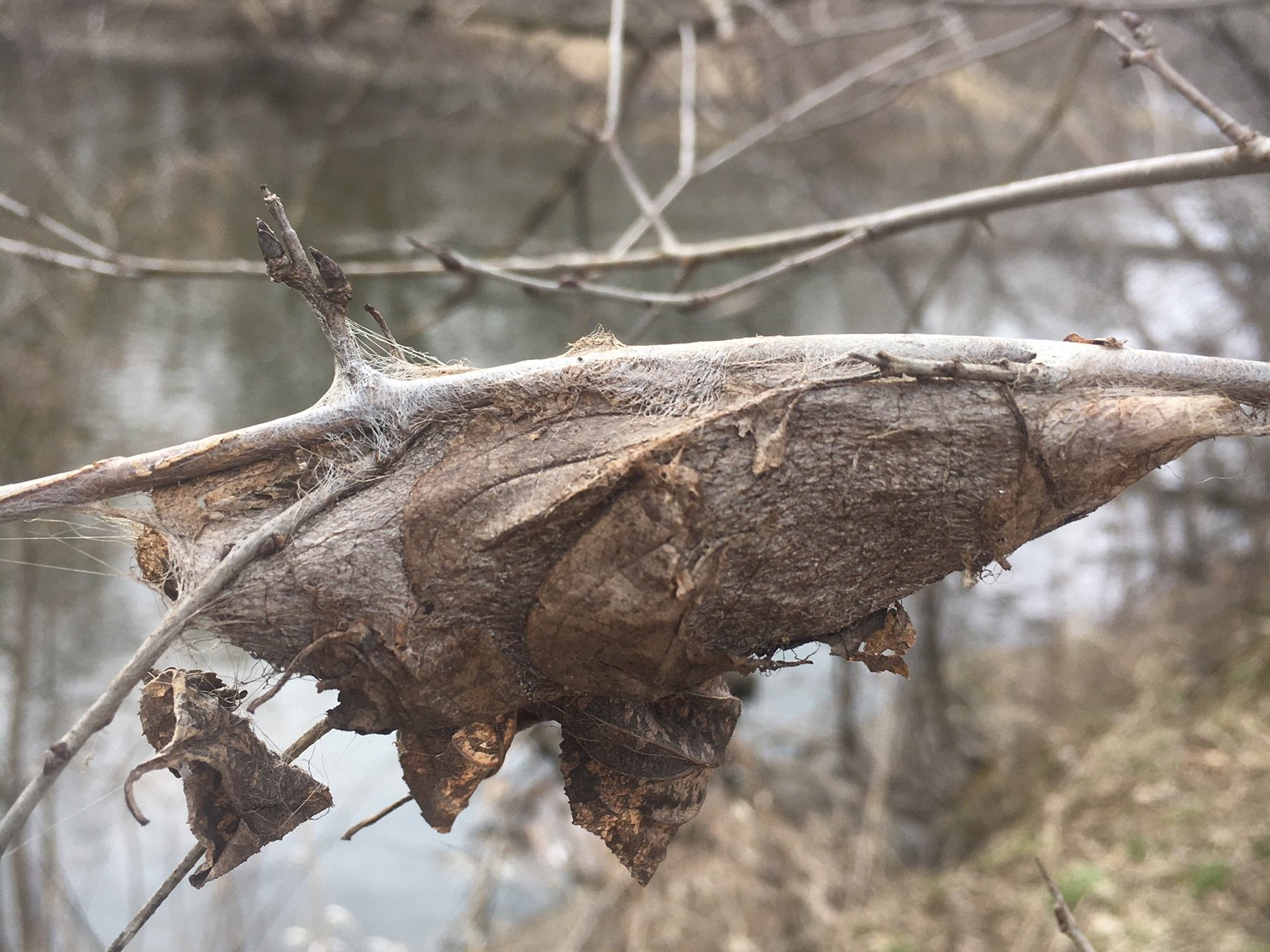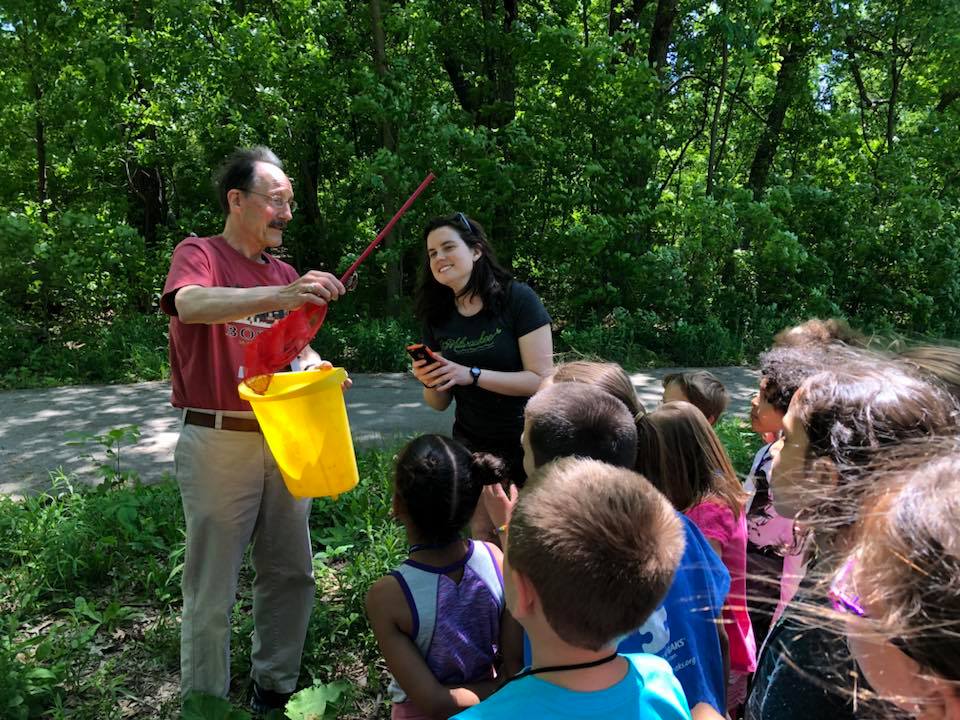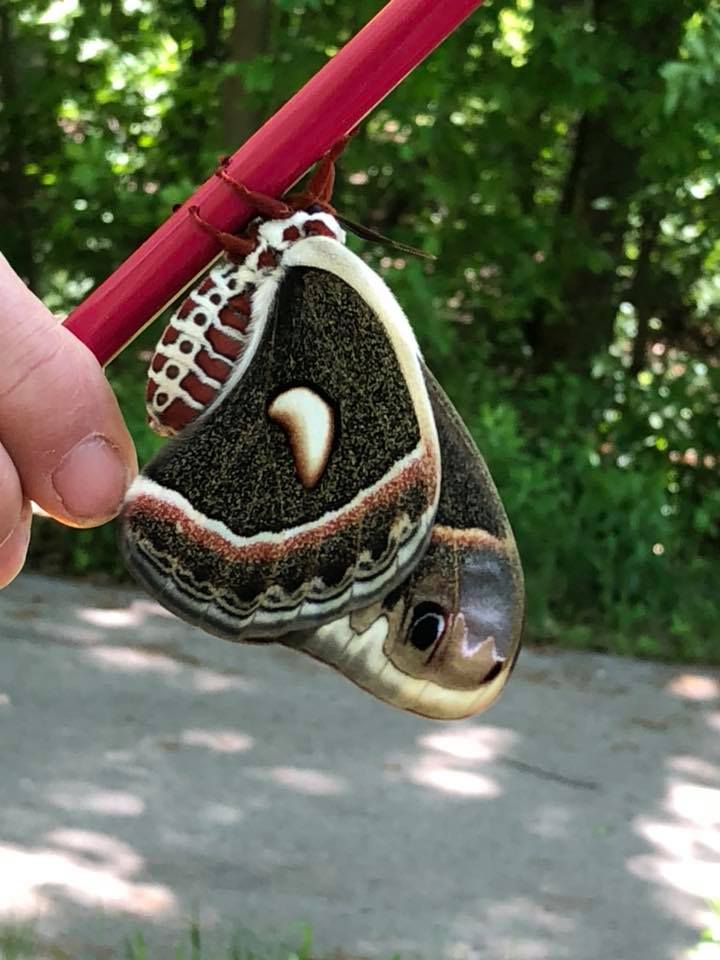The caterpillar that made this cocoon would have started late last summer and likely spent a few days constructing this waterproof home and attaching it to this branch. This is important because this cocoon will be the home of the Cecropia moth pupae until mid to late spring! During the winter and early spring, it undergoes an amazing metamorphosis to transform into a colorful, nocturnal, 5-inch moth! The cecropia moth's wings are brownish with red near the base of the forewing. Host plants include box elder, maple, birch, basswood and elm, among others.

Check out this find along the Menomonee River spotted by UEC Environmental Educator Brynne Drohan. Cecropia Moth (Hyalophora cecropia)
Fun facts: these moths do not have mouth parts, do not eat, and live less than two weeks!


A group of students had an extra treat last summer when a friend of the Center stopped by to release a Cecropia moth he’d raised. What a cool nocturnal critter!




